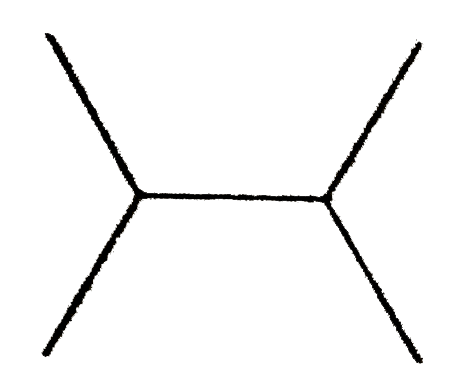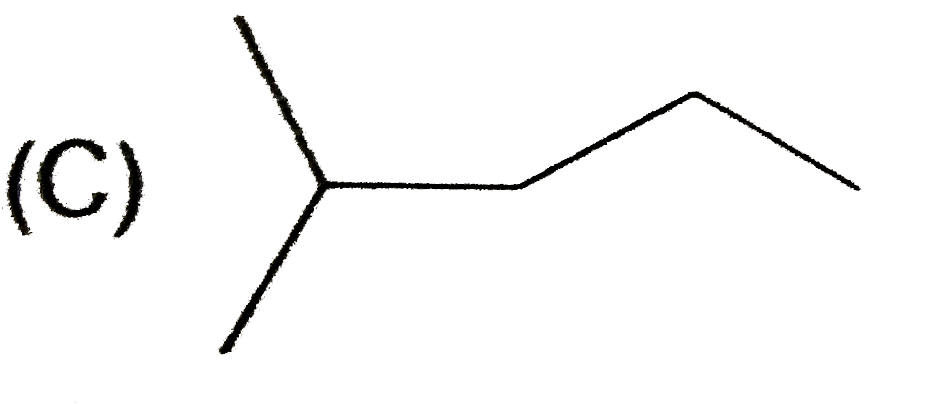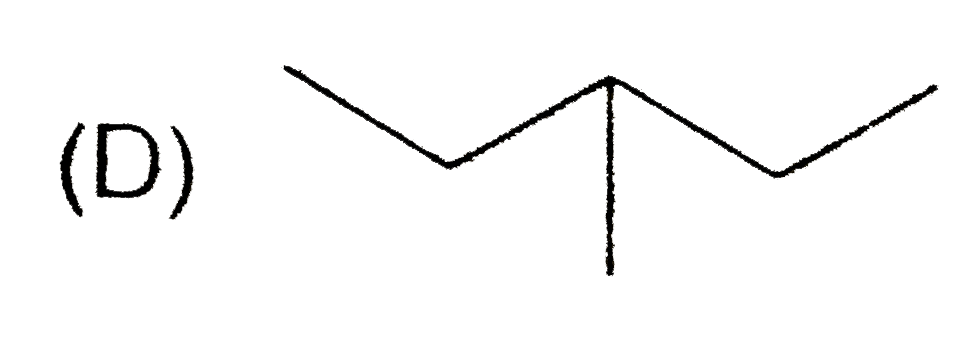CH3−CH=CH2+HBrBenzoyl peroxide−−−−−−−−−→hvProducts
Which of the following is a possible product in the above reaction ?
CH3−CH2−CH2−Br
CH3−C∣BrH−CH2−Br
CH3−C∣CH2BrH−C∣CH2BrH−CH3
All of these
The correct Answer is:4
To solve the question regarding the reaction of propene (CH₃-CH=CH₂) with HBr in the presence of benzoyl peroxide, we need to follow these steps:
Step 1: Identify the Reaction Type
The reaction involves the addition of HBr to an alkene (propene) in the presence of benzoyl peroxide. This suggests that the reaction will follow the anti-Markovnikov rule due to the presence of the peroxide.
Hint: Remember that the presence of peroxide changes the regioselectivity of the addition reaction.
Step 2: Understand Anti-Markovnikov Addition
In anti-Markovnikov addition, the hydrogen atom from HBr will add to the carbon atom of the double bond that has the greater number of hydrogen atoms already attached, while the bromine atom will add to the carbon with fewer hydrogen atoms.
Hint: Identify which carbon in the double bond has more hydrogen atoms to determine where the hydrogen will add.
Step 3: Analyze the Structure of Propene
Propene (CH₃-CH=CH₂) has the following structure:
- The first carbon (C1) has 3 hydrogen atoms (CH₃).
- The second carbon (C2) has 1 hydrogen atom (CH).
- The third carbon (C3) has 2 hydrogen atoms (CH₂).
Hint: Count the hydrogen atoms on each carbon in the double bond to apply the anti-Markovnikov rule correctly.
Step 4: Determine the Products
According to the anti-Markovnikov addition:
- The hydrogen will add to C1 (the carbon with 3 hydrogens).
- The bromine will add to C2 (the carbon with 1 hydrogen).
The possible products of this reaction will be:
1. CH₃-CHBr-CH₃ (bromopropane)
2. CH₃-CH₂-CH₂Br (bromopropane)
However, the major product will be CH₃-CHBr-CH₃, where bromine is attached to the second carbon.
Hint: Visualize the structure of the products to confirm the placement of bromine and hydrogen.
Step 5: Conclude the Possible Products
Based on the analysis, the major product formed from the reaction of propene with HBr in the presence of benzoyl peroxide is the compound where bromine is added to the carbon with fewer hydrogens.
Final Answer: The possible product in the above reaction is CH₃-CHBr-CH₃.
The reaction involves the addition of HBr to an alkene (propene) in the presence of benzoyl peroxide. This suggests that the reaction will follow the anti-Markovnikov rule due to the presence of the peroxide.
In anti-Markovnikov addition, the hydrogen atom from HBr will add to the carbon atom of the double bond that has the greater number of hydrogen atoms already attached, while the bromine atom will add to the carbon with fewer hydrogen atoms.
Propene (CH₃-CH=CH₂) has the following structure:
- The first carbon (C1) has 3 hydrogen atoms (CH₃).
- The second carbon (C2) has 1 hydrogen atom (CH).
- The third carbon (C3) has 2 hydrogen atoms (CH₂).
According to the anti-Markovnikov addition:
- The hydrogen will add to C1 (the carbon with 3 hydrogens).
- The bromine will add to C2 (the carbon with 1 hydrogen).
1. CH₃-CHBr-CH₃ (bromopropane)
2. CH₃-CH₂-CH₂Br (bromopropane)
Based on the analysis, the major product formed from the reaction of propene with HBr in the presence of benzoyl peroxide is the compound where bromine is added to the carbon with fewer hydrogens.
Topper's Solved these Questions
- HYDROCARBONSBOOK - AAKASH INSTITUTECHAPTER - HYDROCARBONSEXERCISE - Assignment(Section - A) (Obejctive type question)
55 Videos
- HYDROCARBONSBOOK - AAKASH INSTITUTECHAPTER - HYDROCARBONSEXERCISE - Assignment(Section - B) (Obejctive type question)
13 Videos
- HYDROCARBONSBOOK - AAKASH INSTITUTECHAPTER - HYDROCARBONSEXERCISE - TRY YOURSELF
78 Videos
- HALOALKANES AND HALOARENES BOOK - AAKASH INSTITUTECHAPTER - HALOALKANES AND HALOARENES EXERCISE - ASSIGNMENT SECTION -D
15 Videos
- HYDROGENBOOK - AAKASH INSTITUTECHAPTER - HYDROGENEXERCISE - ASSIGNMENT (SECTION - D) (Assertion-Reason Type question)
15 Videos
Similar Questions
Knowledge Check
CH3CH2CH2Cl+CH3C∣ClHCH3Na−−−−→dry ether Products.
Which of te following is not a product of above reaction?A B
B C
C D
D
CH3CH3CH3NH2NaNO2−−−−→HCl Product (s)
Which of the following is not possible as product ?ACH3CH2CH2OHBCH3C∣OHHCH3CCH3CH=CH2DCH3C∣ClHCH2−ClCH3−CH2CH2CH2−CH3CH2N2/Δ−−−−−−→Product
Which of the following product(s)is/are can be abtained in the above reaction.AIsopentaneB3-Methyl hexaneCn-pentaneD3-Methyl pentane
CH3CH=CH2+BrCCl3Peroxide−−−−→
The major product of the reaction is
View SolutionCH3−CH=CH2Br2/hv−−−−−−−−−→(low conc.)(A), Product (A) of the reaction is:
View SolutionCH3CH2C∣CH3=CHCH3Reagent−−−−→CH3CH2CH∣CH3OH∣CHCH3
Which reagent forms the above organic product as the single product in the above reaction?
View SolutionCH3−CH2−CH2−CH3AlCl3−−→HBr product. Product in above reaction is
View SolutionCH3−C∣Br=CH(2)HBr−−→
Which of the following statements is correct for this reaction?
View Solution
